Soyuz From Space Station Lands Safely with Brit, Russian and American
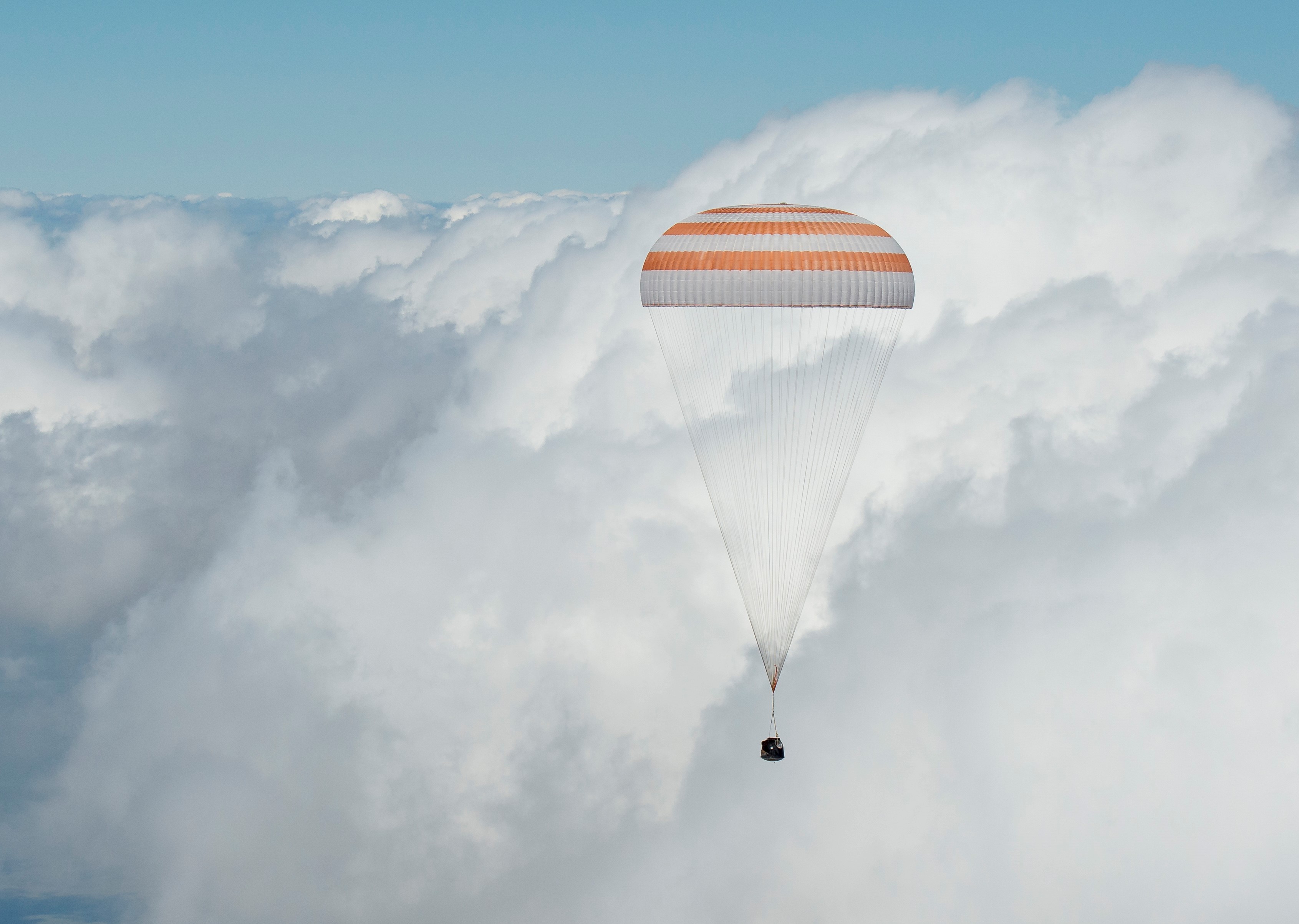
The United Kingdom's first government-sponsored astronaut returned from the International Space Station on Saturday, landing in Kazakhstan with a Russian cosmonaut and NASA astronaut after more than 185 days orbiting the Earth.
Tim Peake, Yuri Malenchenko and Tim Kopra, descending on board Russia's Soyuz TMA-19Mspacecraft, safely soft-landed at about 5:15 a.m. EDT (0915 GMT; 3:15 p.m. local time). Lowered under parachutes and cushioned by a last-second thruster firing, the trio's gumdrop-shaped capsule landed about 90 miles (146 kilometers) southeast of the Kazakh town of Dzhezkazgan.
Met by Russian recovery forces on the cloud-covered steppe, Peake, Malenchenko and Kopra were helped out of their spacecraft and, as is tradition, placed into chairs to begin their readjustment to gravity. The three are set to undergo brief medical checks before being flown to Karaganda for a welcome ceremony. [See Tim Peake's Awesome Photos from Space]
The crew began their trip home earlier on Saturday at 1:52 a.m. EDT (0552 GMT) with the undocking of Soyuz TMA-18M from the station's Rassvet mini-research module. The departure marked the official end of the orbiting outpost's Expedition 47 and the start of Expedition 48.
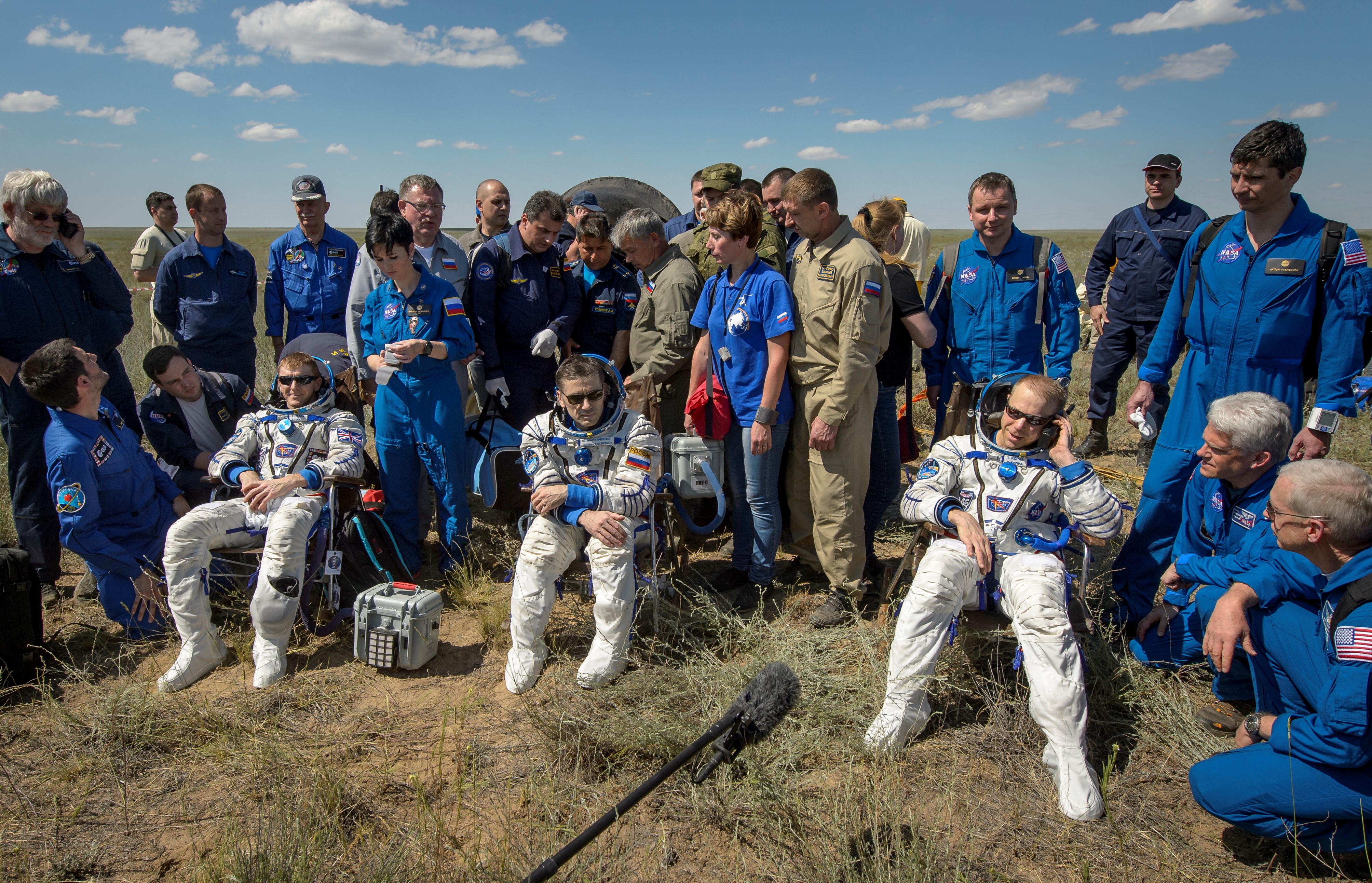
"This is the formal transfer of authority and responsibility of the International Space Station's on board operations from myself to Jeff Williams," said Kopra, referring to his fellow NASA crewmate, during a change of command ceremony on Friday (June 17). "Jeff, congratulations, you're now the commander of the International Space Station."
"Congratulations to Yuri, to Tim and Tim, for a successful stay," replied Williams. "The three of you have left the ship in good hands."
In addition to Williams, who is the first NASA astronaut to spend three long-duration missions on the space station, remaining on the orbital laboratory are cosmonauts Alexey Ovchinin and Oleg Skripochka of Roscosmos. Three more Expedition 48 crewmates are scheduled to launch on July 7. Russian cosmonaut Anatoli Ivanishin, NASA astronaut Kate Rubins and Takuya Onishi with the Japan Aerospace Exploration Agency (JAXA) will arrive on board Soyuz MS-01, the first of Russia's new line of upgraded spacecraft.
Get the Space.com Newsletter
Breaking space news, the latest updates on rocket launches, skywatching events and more!
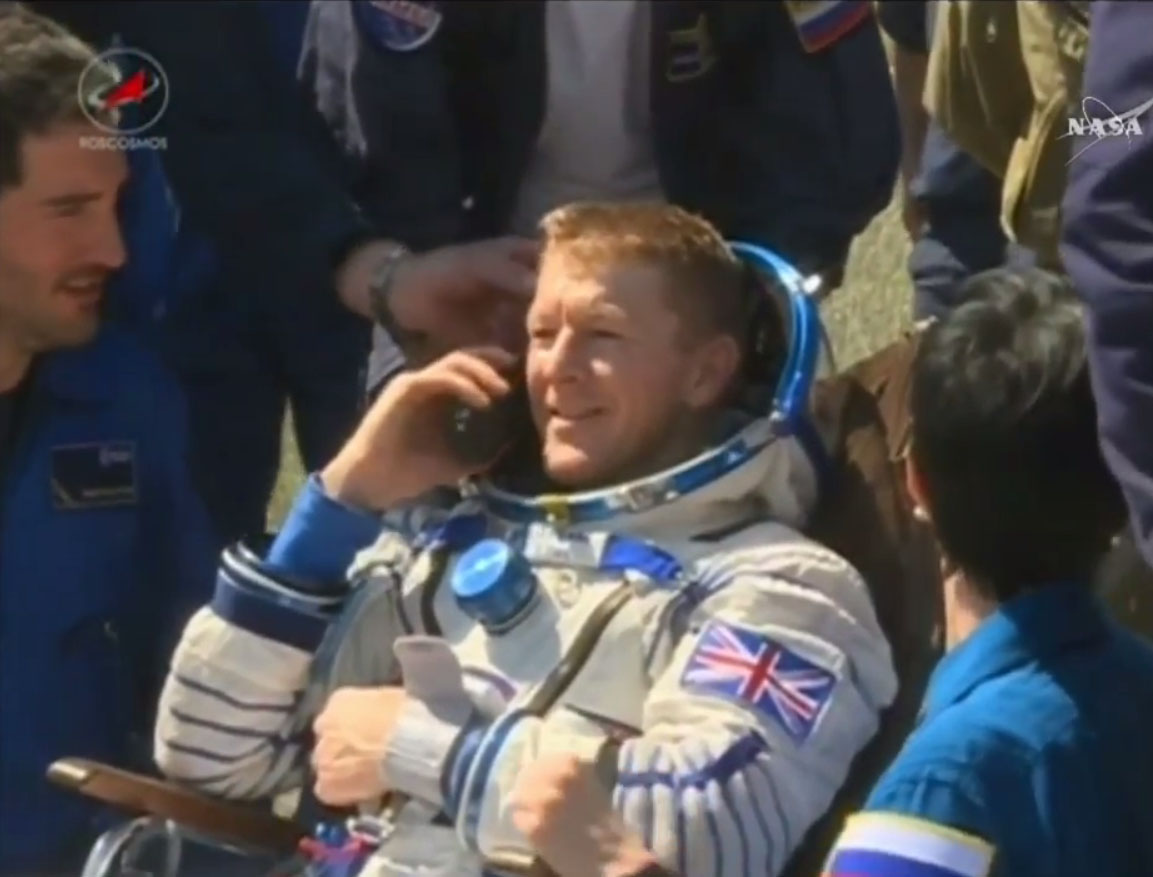
Peake, Malenchenko and Kopra arrived at the station on Dec. 15. During their six months on board, the cosmonaut and two astronauts helped to conduct hundreds of science experiments and technology demonstrations, including the deployment of the first human-rated inflatable habitat, the Bigelow Expandable Activity Module, or BEAM. They also assisted with the arrival of several supply ships, including the return to flight of SpaceX's Dragon capsule, an Orbital ATK Cygnus resupply freighter and two Russian Progress capsules.
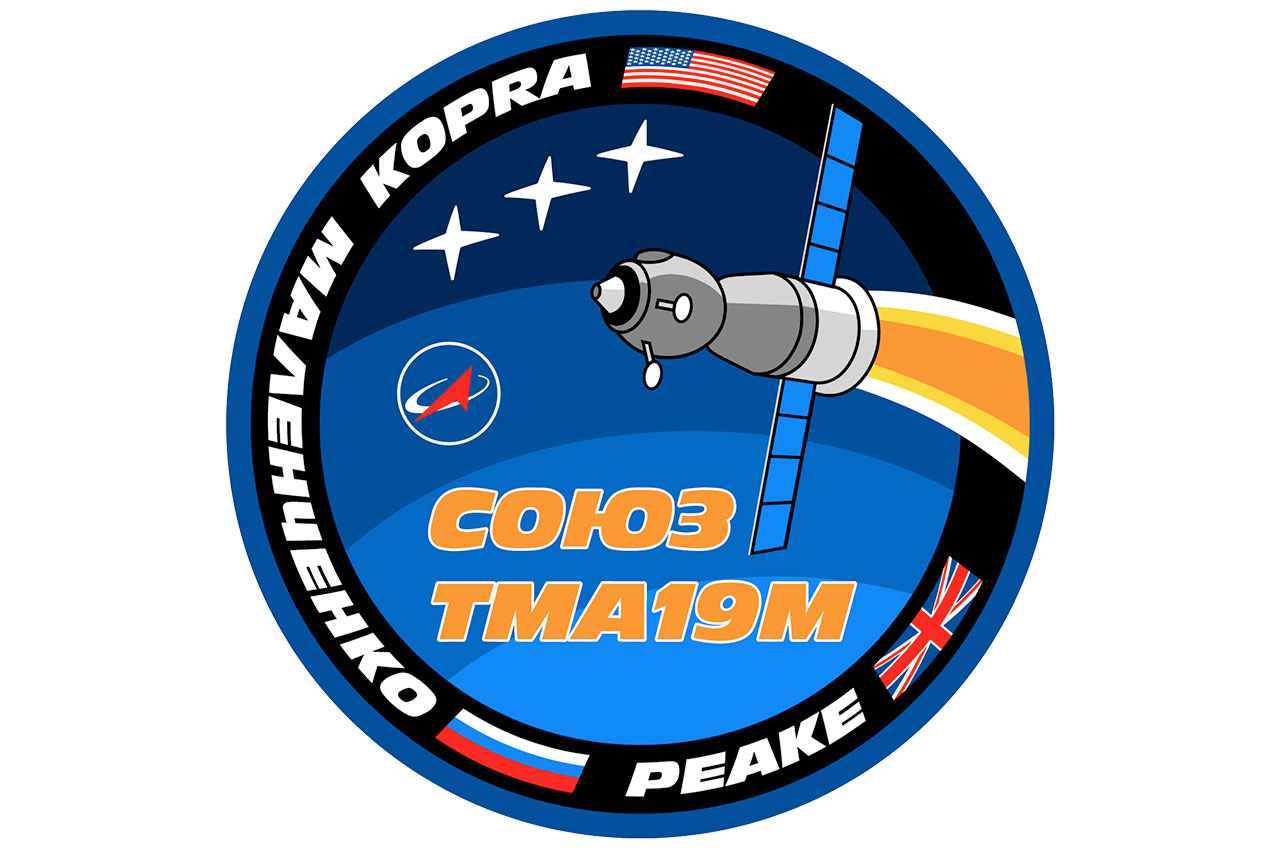
Their return to Earth also marked the completion of the in-flight portion of four NASA investigations into how humans adapt to microgravity, including research focused on ocular health, cognition, salivary markers and the microbiome.
"It takes a long time to complete the number of subjects required for human research investigations — it's usually years in the making — so this is a big milestone," said Yuri Guinart-Ramirez, NASA's lead scientist for Expeditions 47 and 48, in a blog posted to the agency's website.
"We have been so privileged to work here on board with a huge variety of science experiments that we know will be a stepping stone for human exploration," Kopra said, prior to leaving the space station.
All three TMA-19M crewmates also ventured outside of the station on spacewalks. Kopra and Peake replaced a failed voltage regulator that had compromised one of the space station's eight power channels during an almost five-hour excursion in January. A month earlier, Kopra conducted an extravehicular activity (EVA) with astronaut Scott Kelly to move the station's mobile transporter rail car.
In February, Malenchenko went out on an EVA with cosmonaut Sergei Volkov to deploy science experiments and install handrails on the exterior of the Zarya module.
This was Malenchenko's sixth spaceflight, including a prior stay aboard the former Russian Mir space station, a space shuttle flight and four long-duration missions on board the International Space Station. He has now logged 827 days off the Earth, ranking him second for time in space behind cosmonaut Gennady Padalka’s 878 days.
Kopra has now completed his second station mission after serving as an Expedition 20 crew member in 2009. He has now spent 244 days in orbit.
Peake, having landed on his first mission, has now logged nearly 186 days in space.
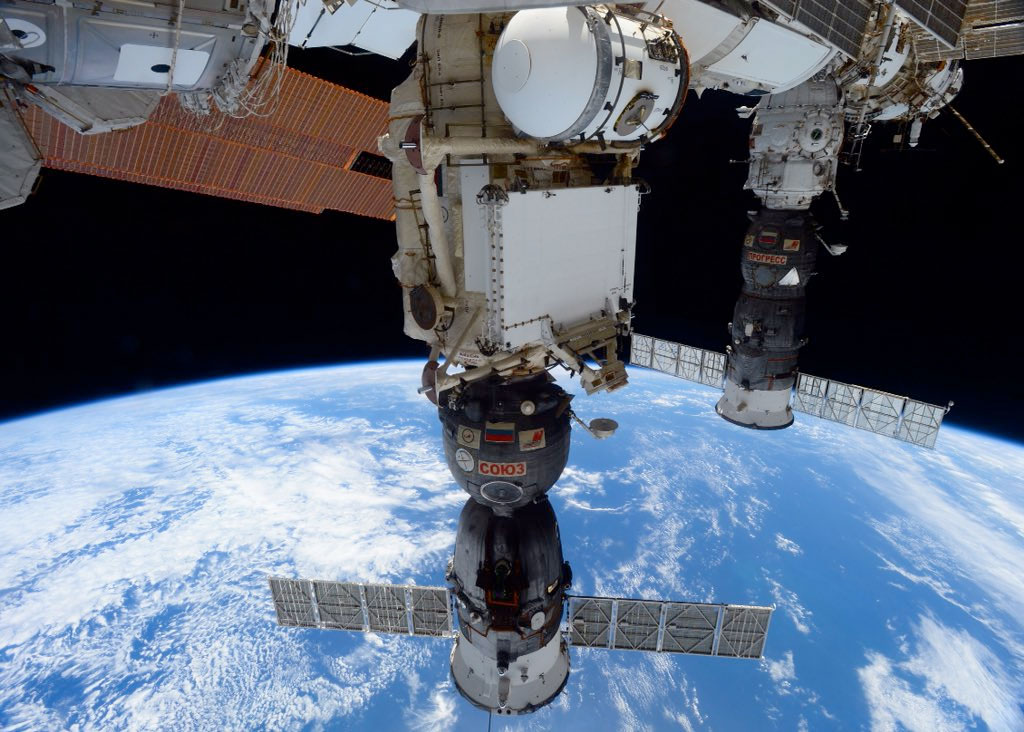
The first European Space Agency (ESA) astronaut to fly on behalf of the British government, Peake devoted part of his time on orbit to honoring his home country. In addition to corresponding with Queen Elizabeth, Peake also ran in the London marathon using a treadmill on the station. He also challenged his social media followers to guess songs he was listening to by sharing an excerpt from the lyrics.
Malenchenko, Kopra and Peake traveled 78.7 million miles (126.7 million kilometers) during 2,976 orbits.
The three Soyuz TMA-18M crewmates will now part ways. Malenchenko will return to Star City, Russia, located near Moscow; Kopra will be flown by NASA jet to Houston and the Johnson Space Center; and Peake will head to ESA's European Astronaut Centre in Cologne, Germany.
Follow collectSPACE.com on Facebook and on Twitter at @collectSPACE. Copyright 2016 collectSPACE.com. All rights reserved.
Join our Space Forums to keep talking space on the latest missions, night sky and more! And if you have a news tip, correction or comment, let us know at: community@space.com.

Robert Pearlman is a space historian, journalist and the founder and editor of collectSPACE.com, a daily news publication and community devoted to space history with a particular focus on how and where space exploration intersects with pop culture. Pearlman is also a contributing writer for Space.com and co-author of "Space Stations: The Art, Science, and Reality of Working in Space” published by Smithsonian Books in 2018.In 2009, he was inducted into the U.S. Space Camp Hall of Fame in Huntsville, Alabama. In 2021, he was honored by the American Astronautical Society with the Ordway Award for Sustained Excellence in Spaceflight History. In 2023, the National Space Club Florida Committee recognized Pearlman with the Kolcum News and Communications Award for excellence in telling the space story along the Space Coast and throughout the world.










